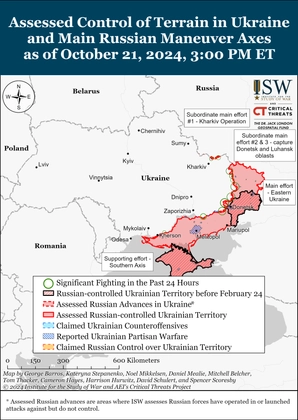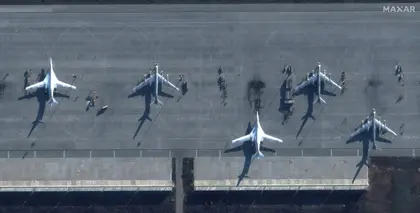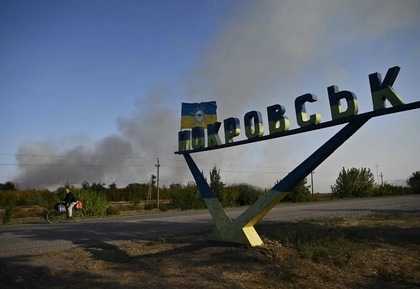Last week, the Diagilev and Saratov airfields deep in Russia, on which the aggressor's strategic aviation planes were based, were attacked by unmanned aerial vehicles (UAVs). Additionally, Ukraine’s Ministry of Defense announced the establishment of a closed cycle of production of 152-mm and 122-mm projectiles, which will largely determine the nature of combat operations at the front.
Read more about these events and their consequences in the weekly review prepared by the Information Defense Project.
JOIN US ON TELEGRAM
Follow our coverage of the war on the @Kyivpost_official.
Punch after punch
At least two Tu-95MS strategic bombers, one Tu-22M3, one fuel tanker and three Russian servicemen were taken out as a result of a UAV attack on the Diagilev and Saratov airfields on the morning of Dec. 5.
At first glance, the occupiers sustained rather insignificant losses. However, if we carefully analyze the consequences of these events, we can see how they will undoubtedly affect the nature, course and results of the Russian-Ukrainian war.
First, the Armed Forces of Ukraine (AFU) demonstrated that it can strike into the enemy's deep rear.
Ukrainian Generals Valerii Zaluzhnyi and Valerii Zabrodskyi in a September article emphasized that one of the main limitations of the AFU was an inability to strike military targets lof the occupier located in the depths of Russian territory.
It seems that in December, Ukraine’s military finally got the opportunity. After all, Engels is 700 kilometers from the Russian-Ukrainian border.

ISW Russian Offensive Campaign Assessment, October, 22, 2024
Theoretically, the AFU has received weapons that can likely hit targets as far away as the aggressor's capital – Moscow.
Second, as a result of drone strikes, the level of combat readiness of the Russian Air Force has decreased, including its ability to strike Ukraine.
There are not so many Tu-95MS in the Russian military and air force, so every plane is important for them and for Ukraine. And the AFU has already shown it can carry out preventive strikes against a group of strategic bombers which can be deployed to launch missile attacks on Ukraine.
The number of airfields available for hosting Russia's strategic aviation is also extremely limited, as they require special and expensive equipment, as well as trained personnel.
As a result of the drone attack on Engels, the Russian General Staff has been forced to relocate aircraft from the main base of strategic aviation to the north of Russia, which in turn affects its ability to launch missile strikes on Ukraine.
Third, we shouldn’t forget about the influence of moral and psychological factors that play out in the course of military operations.
Ukrainian citizens in the rear, and military combatants at the front, have once again convinced themselves that the AFU is capable of preventively punishing an aggressor, who uses tactics of massive missile terror and is trying to effectively bomb Ukraine into the Middle Ages.
Meanwhile the Russian occupiers have once again clearly realized that it will not be possible to sit out the war somewhere far behind the front line, deep in the rear.
If you are fighting against Ukraine, be ready to lose your life at any moment.
And finally…
The Ukrainian defense industry has demonstrated its ability to manufacture weapons and equipment that can be extremely important for achieving victory in the war, influence the nature of hostilities and create strategic advantages for Ukraine. This is discussed in more detail below.
Ukrainian weapons as a factor of national security
One of the main problems preventing the AFU from winning anytime soon is a lack of modern weapons of Ukrainian production, combined with Ukraine's critical dependence on the military-technical assistance of Western partners. This can be measured in terms of the pace, volume and range of weapons.
The AFU does not currently have, for example, medium-range ballistic missiles of the “Iskander” type, almost no modern tanks of the “Abrams” or “Leopard-2” type featuring the latest modifications, nor modern air defense systems.
Ukraine does not manufacture them (we will talk about individual cases that have become public, below), and Western partners are not always in a hurry to provide us with the modern weapons we really need.
The main task of the military-political leadership of the country is the creation of closed production cycles of modern weapons.
It is clear that information on this subject available in the public sphere is limited, and military secrecy is clearly at play. However, certain reference points in the process of the development and production of modern weapons can be determined.
The first relates to the beginning of Russian aggression in 2014, when a decision was made to create modern Ukrainian weapons. The state provided funds for research and development and work got underway to complete new types of weapons.
Thus, the Neptune anti-ship missile, the Stugna-P anti-tank complex, and the BTR-3E were created; and tanks were upgraded to the Oplot and Bulat level. In 2017, the Government of former Prime Minister of Ukraine Volodymyr Groysman made a decision to produce 152-mm shells.
Unfortunately, in 2019-2022, the implementation of many of these military-technical projects slowed down significantly. President Volodymyr Zelensky believed that peace agreements with Russia could be reached not as a result of the victory of the AFU, but as a result of negotiations with Russian President Vladimir Putin, in whose eyes the Ukrainian head of state saw “peace.”
Russia's large-scale aggression against Ukraine showed the falsity of such expectations. In March 2022, Ukraine’s military-political leadership was faced with the need to deploy the production of modern weapons in extremely unfavorable conditions of military operations, in the shortest possible time and during the enemy's sabotage and reconnaissance work.
Nine months passed, and several circumstances have become clear.
First, the production of modern Ukrainian weapons, despite lost time, is ongoing. And they are being produced quite efficiently.
Second, Ukrainian counter-intelligence agencies have managed to successfully conceal the development of Ukrainian weapons and their places of their production.
Across social networks, wide-ranging discussions have been taking place regarding the type of UAVs that were used to strike Russian strategic aviation bases. After all, until now, Ukraine had not seemingly produced drones with such a range, and the U.S. has refused to supply Ukraine with the Gray Eagle attack UAV for security reasons.
According to the results of these discussions, experts have come to the conclusion that Ukraine used Soviet UAVs of the type Tu-141 "Stryzh" or Tu-143 "Reis" in a modernized form.
Allow me to disagree with this conclusion. Most likely, a completely new Ukrainian development was used: indeed, the Ukroboronprom State Concern announced the completion of its military trials the day before.
The first steps towards the creation of a closed cycle of actual Ukrainian weapons production have been taken.
The main thing is that future rulers do not forget modern lessons and finally realize that such production is one of the main proponents of Ukraine’s national security, which, in turn, determines the ability of the AFU to protect the sovereignty and independence of Ukraine.
Ihor Zhdanov is a co-founder of the Open Policy Foundation, a National Government Organization (NGO) in Ukraine.
The views expressed are the author’s and not necessarily those of the Kyiv Post.
You can also highlight the text and press Ctrl + Enter






